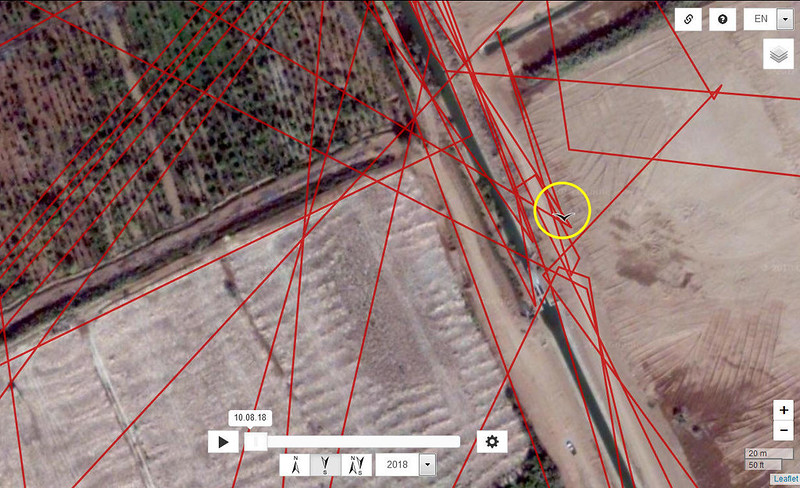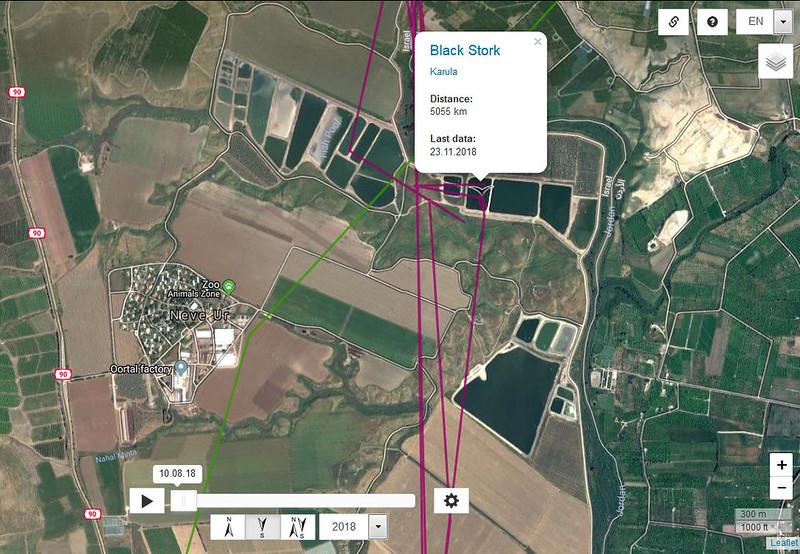Hello,
everyone!

HAPPY 10th BIRTHDAY !
Liz01 wrote: ↑November 24th, 2018, 7:12 am
Anne, good morning

Sorry because I answer so late. I had a busy day yesterday ...
Hello, Liz,

Thank you for your reply.
I think we are discussing something that we fully agree on.

The most common, normal route is through the Bosphorus. But we know that there are also alternate (less frequently used) routes. For a BS, who is taking an unusual route, it might nevertheless be his usual route.

I also agree that it is probable that some (especially inexperienced) BS may accidentally deviate from their route, for many reasons. The weather (wind) can probably be the cause in many cases.
That is why I think it is useful that the weather data is given here. Provided that someone with sufficient time and knowledge will ever interpret these data, of course.
Here is an interesting study that shows that migrant birds, that breed in the same area in Europe, spread out across all of Africa during the northern winter. A new satellite-tracking study shows that
the destination of individual birds is largely determined by the wind conditions they encounter during their first migration.
Wind blows young migrant birds to all corners of Africa.
https://phys.org/news/2017-05-young-mig ... .html#nRlv
 Another very interesting fact is the accepted theory that birds use genetic maps during migration.
Another very interesting fact is the accepted theory that birds use genetic maps during migration.
Many young birds migrate successfully without help from older birds who have made the trip before. The implication is that migration instructions - perhaps even some sort of map of astronomical or geographical references - are somehow written upon the genes inherited from their parents. Just how maps can be coded into gene structure is anyone's guess. In fact, since the DNA in the genes seems to code only for protein synthesis, the locations and characters of inheritable maps are still not understood.
Nevertheless, several independent studies came to amazing conclusions.
For example this study:
The genetic make-up of a willow warbler determines where it will migrate when winter comes. Studies of willow warblers in Sweden, Finland and the Baltic States show that "migration genes" differ - depending on where the birds breed in the summer. The willow warblers that breed in southern Sweden migrate to West Africa, while those in northern Sweden, Finland and the Baltic States fly to southern or eastern Africa. A genetic comparison shows that the genomes are almost completely identical,
but there are significant genetic differences between the birds that breed in southern Sweden and those that breed in the northern parts of the country and east of the Baltic.
These differences are restricted to two regions in the genome, where the comparison shows extensive differences in over 200 genes.
Read more at: https://phys.org/news/2017-07-birds-mig ... y.html#jCp
It becomes even more interesting if birds from the same species, but with different 'migration genes' interbreed. The 'hybrid' offspring inherit some mixed directional messages!*
For example, the Swainson’s thrush is split into two subgroups that migrate along very different routes. Every spring both subgroups return to Canada and— here’s the key — they sometimes
interbreed.
The researchers found that the 'hybrid' offspring favoured a flyway that was in between those of the two subgroups! Since the hybrid thrushes couldn’t have learned that middle road, it seems that
the birds were guided by a mixture of genetic instructions inherited from both parents.
 Read more: https://www.smithsonianmag.com/science- ... iuc2rPB.99
* Mixed genes appear to drive hybrid birds to select more difficult routes than their parent species, according to new research from University of British Columbia zoologists. “Instead of taking well-trodden paths through fertile areas, these birds choose to scale mountains and cross deserts,” says UBC researcher Kira Delmore.
Mixed genes mix up the migrations of 'hybrid' birds!
https://news.ubc.ca/2014/07/22/mixed-ge ... rid-birds/
Read more: https://www.smithsonianmag.com/science- ... iuc2rPB.99
* Mixed genes appear to drive hybrid birds to select more difficult routes than their parent species, according to new research from University of British Columbia zoologists. “Instead of taking well-trodden paths through fertile areas, these birds choose to scale mountains and cross deserts,” says UBC researcher Kira Delmore.
Mixed genes mix up the migrations of 'hybrid' birds!
https://news.ubc.ca/2014/07/22/mixed-ge ... rid-birds/








